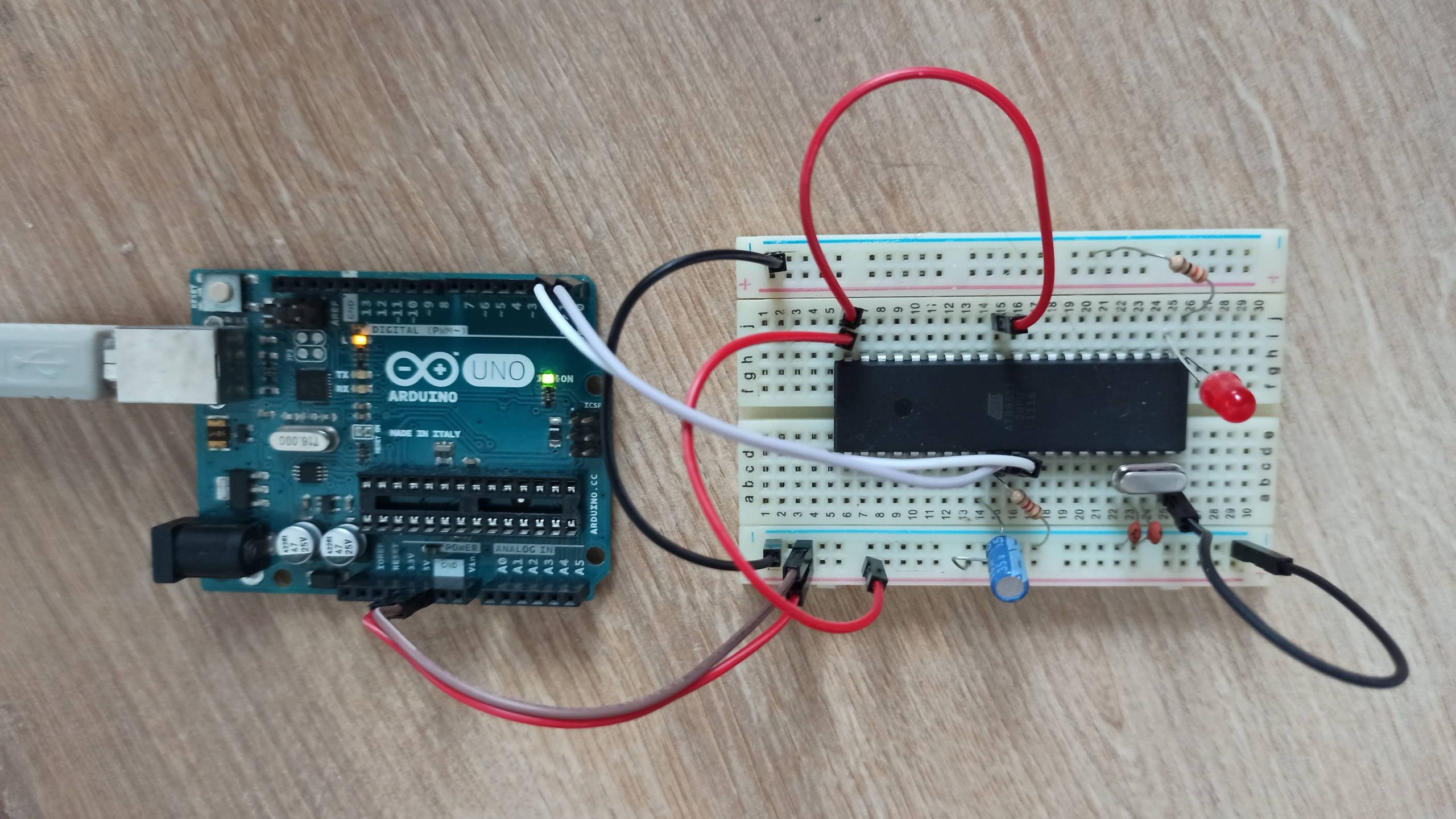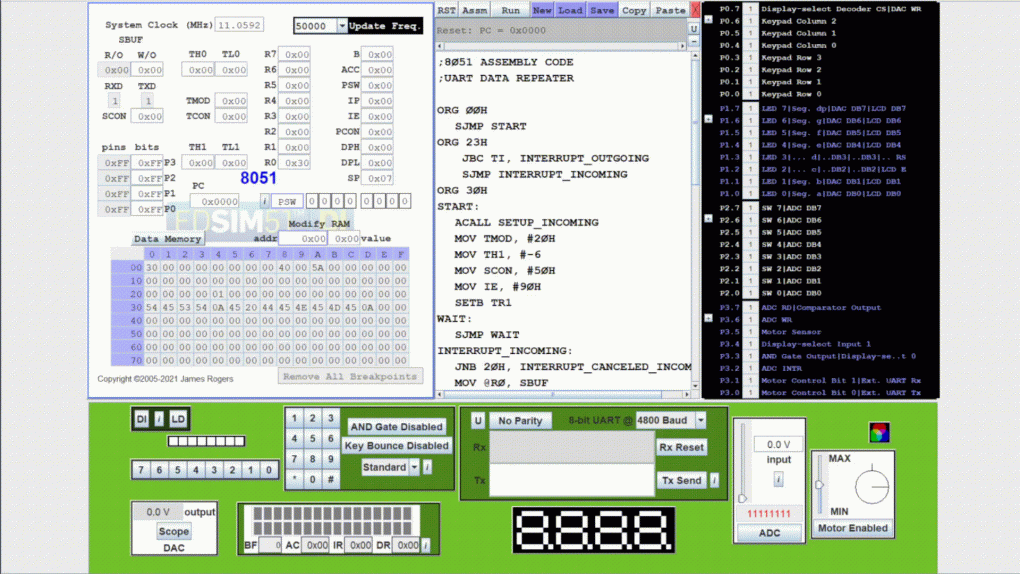
These two programs send all received data when either there is no space available in the buffer or you press the enter button in the UART terminal. There is one LED to indicate data transmission.

There are one Assembly and one C codes available, which are completely identical. In the Keil compiler, C code costs 290 Bytes while Assembly code costs 120 Bytes.
;8051 ASSEMBLY CODE ;UART DATA REPEATER ORG 00H SJMP START ORG 23H JBC TI, INTERRUPT_OUTGOING SJMP INTERRUPT_INCOMING ORG 30H START: ACALL SETUP_INCOMING MOV TMOD, #20H MOV TH1, #0FDH ; 9600 BAUD RATE MOV SCON, #50H MOV IE, #90H SETB TR1 WAIT: SJMP WAIT INTERRUPT_INCOMING: JNB 20H, INTERRUPT_CANCELED_INCOMING MOV @R0, SBUF CLR RI CJNE @R0, #0DH, CONTINUE_INCOMING MOV @R0, #0AH ACALL SETUP_OUTGOING INTERRUPT_OUTGOING: JB 20H, INTERRUPT_CANCELED_OUTGOING MOV SBUF, @R0 CJNE @R0, #0AH, CONTINUE_OUTGOING ACALL SETUP_INCOMING RETI CONTINUE_INCOMING: CJNE R0, #7EH, CONTINUE_OUTGOING MOV 7FH, #0AH ACALL SETUP_OUTGOING SJMP INTERRUPT_OUTGOING CONTINUE_OUTGOING: INC R0 RETI INTERRUPT_CANCELED_INCOMING: CLR RI INTERRUPT_CANCELED_OUTGOING: RETI SETUP_INCOMING: CLR P2.0 SETB 20H MOV R0, #30H RET SETUP_OUTGOING: SETB P2.0 CLR 20H MOV R0, #30H RET END
//8051 C CODE
//UART DATA REPEATER
#include <reg51.h>
sbit LED = P2^0;
bit state = 1;
unsigned char pointer = 0;
unsigned char text[80];
void setup_incoming(){
LED = 0;
state = 1;
pointer = 0;
}
void setup_outgoing(){
LED = 1;
state = 0;
pointer = 0;
}
void interrupt_outgoing(){
SBUF = text[pointer];
if(text[pointer]==0x0A){
setup_incoming();
}
else{
pointer++;
}
}
void interrupt_incoming(){
text[pointer] = SBUF;
RI = 0;
if(text[pointer]==0x0D){
text[pointer] = 0x0A;
setup_outgoing();
interrupt_outgoing();
}
else{
if(pointer==78){
text[79] = 0x0A;
setup_outgoing();
interrupt_outgoing();
}
else{
pointer++;
}
}
}
void serial_interrupt() interrupt 4 {
if(TI==1){
TI = 0;
if(!state){
interrupt_outgoing();
}
}
else{
if(state){
interrupt_incoming();
}
else{
RI = 0;
}
}
}
void main(){
setup_incoming();
TMOD = 0x20;
TH1 = 0xFD;
SCON = 0x50;
IE = 0x90;
TR1 = 1;
while(1){}
}
I’ve tested both codes on AT89S51 and verified their functionalities but, these codes comes with ABSOLUTELY NO WARRANTY. It is your own risk to use these codes in your applications.
You must use a 11.0592 MHz crystal on your own circuit to get a proper UART baud rate. Don’t forget to adjust the value of the TH1 register to get the intended UART baud rate on your own application.
I’ve used one Arduino UNO board -without Atmega328 IC- as a USB UART bridge and connected to it through PuTTY terminal software. If you don’t want to set up a physical circuit, you can try these codes on EdSim51 simulation software.
Note: Feel free to ask anything via email or comments which you don’t understand.
